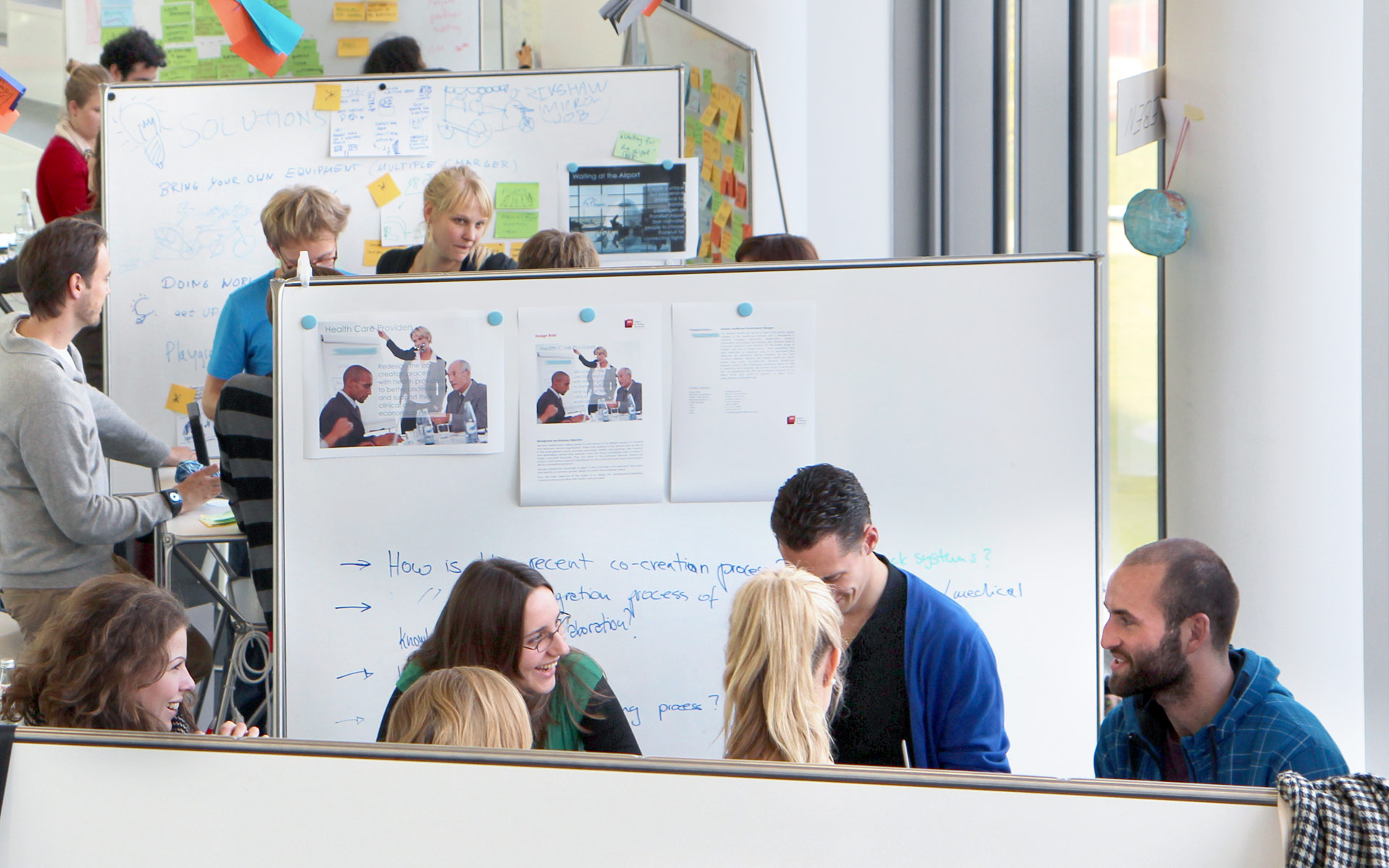Julia von Thienen was born in Berlin. She studied psychology, neuroscience and philosophy at the Free University of Berlin. Her PhD work on causation also bridged these fields. Julia has taught research methodology and philosophy of science for social science students and neuroscientists at the Free University of Berlin, the University of Chicago and the University of Potsdam.
In 2008 Julia joined the Hasso Plattner Institute, specifically the Stanford-Potsdam Design Thinking Research Program. Julia`s studies are concerned with design thinking as an approach to creativity and innovation. Together with her colleagues, she invokes several research perspectives to elucidate why and how design thinking works, in scientific terms. Some insights gleaned over the years are shared in the lecture Why and How Design Thinking Works as well as in the course Design Thinking for Digital Engineering.
Research Approaches:
- By means of empirical studies, typically with randomized experiments, the impact of the “3 Design Thinking Pillars” or “3P” is investigated: Creative Processes, People and Places.
- Theories on creativity and innovation from various disciplines are drawn together and compared to design thinking practices.
- Processes of culture development are modelled, based on creative activity and innovation adoption rates in populations.
- Studies into design thinking history elucidate theoretical beliefs and concepts that inform design thinking practices today.
- Design thinking is practically applied to advance human-centred innovation. Specifically, the medical documentation system Tele-Board MED is developed to promote doctor-patient-teamwork at eye-level, and to help medical practitioners as well as patients benefit from new digital opportunities.
- Design thinking education is a subject of practical developments and research, including face-to-face education and online teaching.
- Based on innovation theory and empirical research results, new tools are developed for design thinking.
- Successful design thinking practices are introduced in other work areas to facilitate collaboration and innovation in these fields.
- One domain of specific attention is the biological basis of creativity and innovation. Recently, this work is part of the initiative to advance the new field of neurodesign.
- Another recent field of attention is the political environment of countries or continents as a “large-scale place factor” to impact innovation rates and innovation types.
Sample publications regarding these research approaches and a full list of publications can be found at Julia’s homepage.

